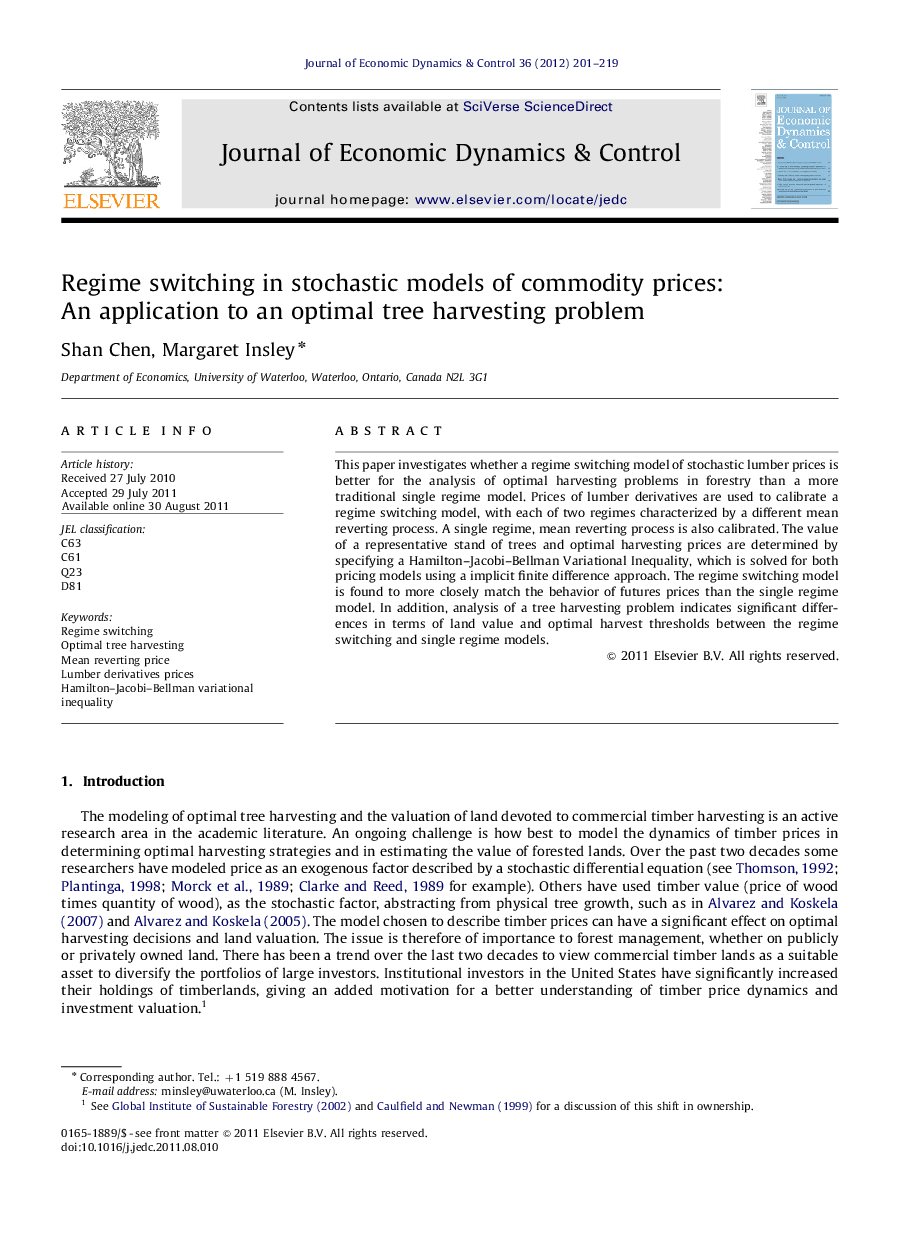| Article ID | Journal | Published Year | Pages | File Type |
|---|---|---|---|---|
| 5099055 | Journal of Economic Dynamics and Control | 2012 | 19 Pages |
Abstract
This paper investigates whether a regime switching model of stochastic lumber prices is better for the analysis of optimal harvesting problems in forestry than a more traditional single regime model. Prices of lumber derivatives are used to calibrate a regime switching model, with each of two regimes characterized by a different mean reverting process. A single regime, mean reverting process is also calibrated. The value of a representative stand of trees and optimal harvesting prices are determined by specifying a Hamilton-Jacobi-Bellman Variational Inequality, which is solved for both pricing models using a implicit finite difference approach. The regime switching model is found to more closely match the behavior of futures prices than the single regime model. In addition, analysis of a tree harvesting problem indicates significant differences in terms of land value and optimal harvest thresholds between the regime switching and single regime models.
Keywords
Related Topics
Physical Sciences and Engineering
Mathematics
Control and Optimization
Authors
Shan Chen, Margaret Insley,
